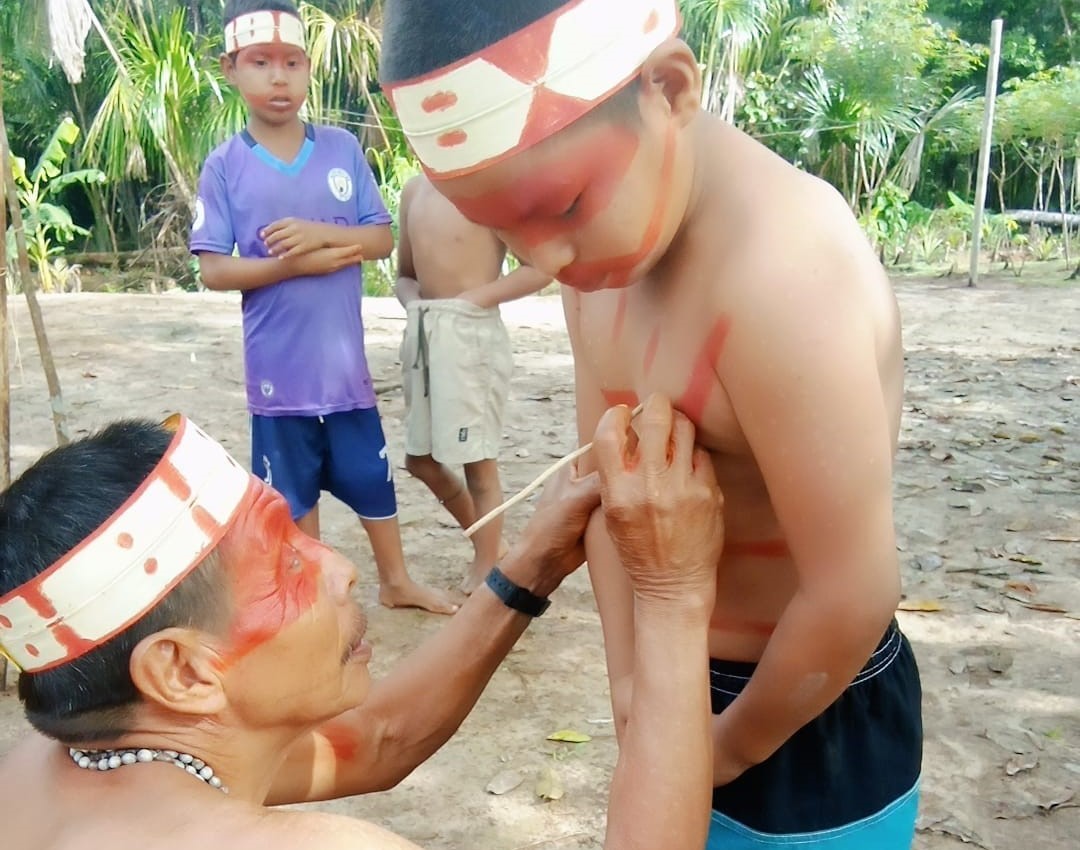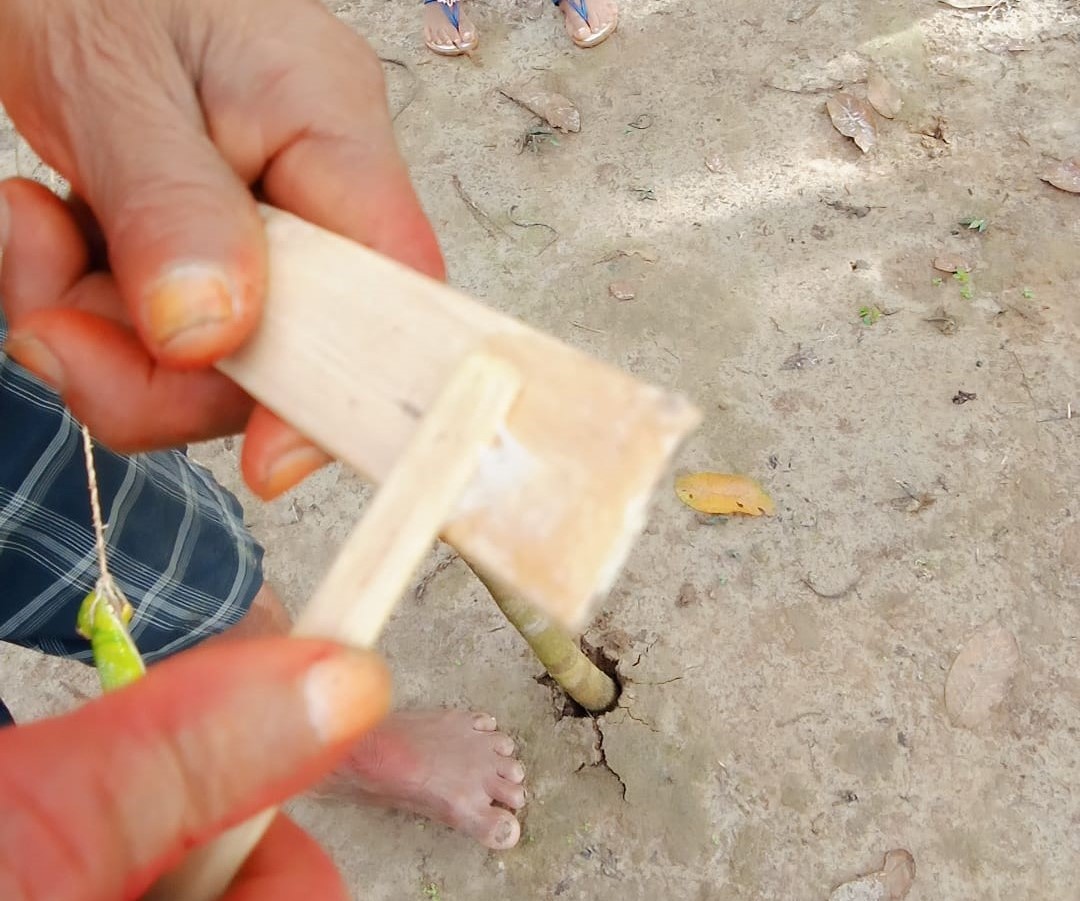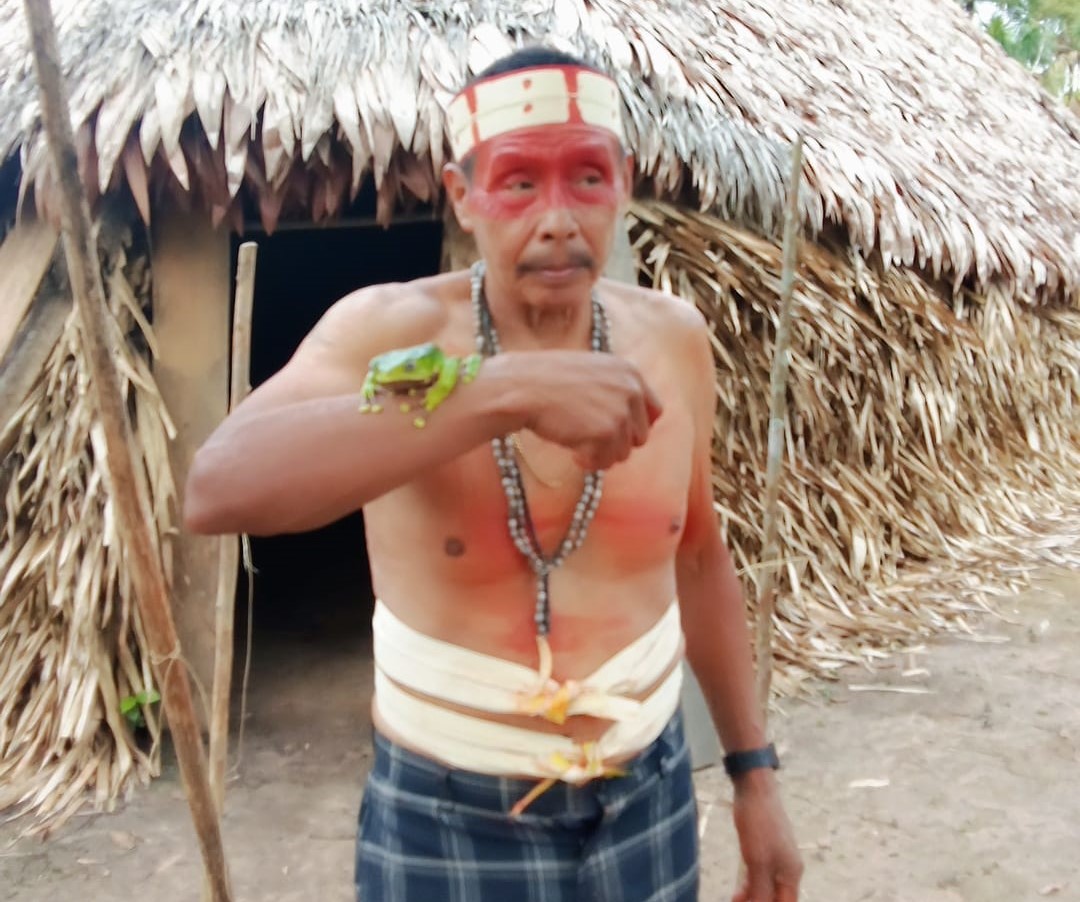Kambo for Beginners: An Introductory Guide to Frog Medicine Therapy
Kambo is a unique and powerful substance derived from the Phyllomedusa bicolor frog, prominently used in South America for its significant role in religious-purifying rituals. Originating from the depths of the Amazon rainforest, kambo holds a revered place in traditional medicine, employed by indigenous communities for a variety of purposes, from enhancing hunting prowess to the treatment of ailments such as malaria and snake bites. Its intriguing origin story, coupled with its introduction to the western world in 1986, has sparked a global interest in kambo treatment and the potential benefits of kambo for various health conditions.
This article delves into the intricate world of kambo, exploring what kambo is, the traditional practice of kambo application, and the scientific scrutiny it has undergone. Readers will gain insights into the reported benefits and potential risks associated with kambo medicine, the contrast between its indigenous use and western adoption, and the future directions of research in this field. As kambo continues to pique the curiosity of healthcare professionals and individuals seeking alternative treatments for mental health conditions and more, it’s crucial to navigate the kambo phenomenon with an informed perspective.
What is Kambo?
Kambo, derived from the secretion of the giant monkey frog (Phyllomedusa bicolor), is a traditional medicine with a rich history among indigenous tribes of the Amazon rainforest. This substance, known for its potent effects, is applied in a unique manner during healing and spiritual cleansing rituals.

Origin and Collection
Kambo is harvested directly from the frog, which is found in the vast Amazon rainforest. The frogs are carefully handled by shamans who collect the secretion from their legs, ensuring that the frogs are not harmed and are returned safely to their natural habitat.
Application Method
The traditional application of kambo involves creating small burns on the skin, typically on the shoulder, back, legs, or feet. The kambo is then applied to these burns, allowing its compounds to enter the body transdermally. This method, while appearing harsh, is a critical part of the ritualistic aspect of kambo therapy.
Chemical Composition
Kambo contains a complex mix of bioactive peptides that have been the subject of scientific study. These peptides include dermorphin and deltorphins, which are opioid-like peptides, and dermaseptins, which show potential antibiotic activity. Other components like phyllomedusin and phyllokinin interact with various bodily systems to produce physiological effects. The substance is notably rich in peptides that are toxic to parasites, viruses, and bacteria, yet exhibit antibacterial, antimicrobial, and analgesic properties that are beneficial to humans.
Clinical and Traditional Views
Despite its widespread use in traditional practices, there is a lack of scientific evidence to conclusively support the therapeutic benefits of kambo for medical conditions. However, it continues to be used for its perceived benefits in cleansing, healing, and strengthening the body’s natural defenses. The unique arrangement and concentration of bio-active and neuro-peptides in kambo position it among the world’s most effective natural antibiotics and immune system boosters.
Kambo’s role in traditional medicine and its adoption in modern therapeutic practices highlight its significance as both a cultural artifact and a subject of medical interest. Its application and effects are a testament to the complex interplay between traditional knowledge and modern scientific inquiry.
The Practice of Kambo Application
Kambo has seen a significant transformation from its traditional roots among riverine populations and rubber tappers to modern urban settings and global cities. Initially used in hunting rituals, kambo is now widely adopted in therapeutic practices and neo-shamanic healing rituals, particularly in Western urban centers.
Application Process
- Preparation: Participants begin by drinking about a liter of water or cassava soup to prepare the body for the intense purging process that follows.
- Creating Gates: The practitioner creates small burns on the skin, usually on the arm or leg, to form what are known as ‘gates’.
- Applying Kambo: Kambo is then applied to these gates. This method allows the substance to enter directly into the lymphatic system and bloodstream.
Immediate Effects
- Physical Reactions: Shortly after application, participants may experience severe vomiting, dizziness, and swelling of the lips or face. These symptoms are intense and can start almost immediately.
- Duration of Symptoms: The physical reactions typically last between 10 to 25 minutes, during which the body attempts to purge toxins.
Modern Practices
- Location of Application: Traditionally, kambo was applied to the shoulder area, but today, it is often administered on various chakras or energy points across the body to align with modern holistic views.
- Safety Measures: It is crucial to start with a small dose of kambo, especially for beginners, and to ensure that the practitioner is experienced and skilled. Participants are advised to avoid any supplements or medications unless necessary on the day of the ceremony and to report any medical conditions or medications to the practitioner beforehand.
Preparation and Aftercare
- Hydration: Drinking sufficient water before the ceremony is vital for facilitating easier purging. It is recommended not to exceed a total liquid intake of 1.5 liters to avoid overhydration.
- Diet: Adopting a clean diet before and after the ceremony, avoiding alcohol, sugar, and spicy foods, can enhance the effectiveness and reduce discomfort during the purging process.
This detailed approach to the application of kambo showcases its evolution from a traditional remedy to a complex therapeutic practice that integrates elements of both indigenous wisdom and contemporary health practices.
Scientific Analysis of Kambo
Kambo, a secretion from the Phyllomedusa bicolor frog, has garnered attention in scientific circles due to its unique composition of bioactive peptides with potential therapeutic applications. This section delves into the scientific analysis of Kambo, exploring its chemical properties, effects on human health, and ongoing research into its medical potential.

Peptide Composition and Biomedical Potential
Kambo contains a variety of peptides known for their potent biological effects. Defensin, one of these peptides, exhibits strong antimicrobial properties, which may boost the immune system and protect against infections. Additionally, several peptides in Kambo demonstrate analgesic properties, potentially alleviating pain and inflammation. Research is also exploring Kambo’s peptides for their biomedical applications in pain management and their role in treating antibiotic-resistant strains of bacteria.
Neurological and Systemic Effects
The peptides in Kambo can cross the blood-brain barrier, influencing various bodily systems. These include effects on gastrointestinal functions, blood pressure variations (both hypertension and hypotension), and interactions with neuropeptides that impact the nervous system. This ability to affect multiple systems underscores the complexity of Kambo’s actions and its potential as a multifaceted therapeutic agent.
Risks and Intoxication Cases
Despite its therapeutic potentials, Kambo use is not without risks. Scientific literature has documented cases of acute intoxication, with symptoms ranging from severe vomiting to life-threatening conditions like hyponatremia and acute renal failure. An algorithm has been developed for the early diagnosis and management of Kambo intoxication, highlighting the need for cautious and informed use of this substance.
Legal and Research Challenges
The scientific community faces challenges in fully understanding and regulating Kambo. There are no standardized therapy protocols or legislation specifically addressing Kambo use, which complicates the management of intoxication cases. Moreover, while there is significant biochemical research on Kambo’s peptides, there are limited studies on their effects in human models, with most research conducted in animal models or in vitro.
Patents and Pharmaceutical Interest
The unique properties of Kambo’s peptides have not gone unnoticed in the pharmaceutical industry. Over 70 patents have been filed for peptide analogues derived from these anuran-based peptides. However, attempts by drug companies to create patent-eligible synthetic versions of these peptides often find that the natural peptides from the secretion are more effective in experiments.
This scientific analysis of Kambo highlights both its potential and its risks, underscoring the need for further research and careful clinical evaluation. The complex interplay of its bioactive components offers promising avenues for medical research, yet the full scope of its effects and therapeutic viability remains to be thoroughly explored.
Reported Benefits of Kambo
Kambo is widely recognized for its potential health benefits, which range from physical detoxification to mental health improvements and support in addiction recovery. Here’s a detailed look at the reported benefits of Kambo therapy:
Physical and Mental Detoxification
Kambo is believed to have a powerful detoxifying effect, helping to eliminate toxins and heavy metals from the body. This cleansing process is also thought to detoxify major organs such as the liver and intestines, potentially improving overall physical health. Additionally, Kambo is said to dissolve emotional blocks and reset cellular memory, which can lead to enhanced mental functioning and emotional well-being.
Mental Health Benefits
Many users of Kambo report improvements in mental health conditions. It is credited with enhancing focus and clarity while reducing symptoms of stress and anxiety. These benefits are particularly valued in modern therapies, where mental health support is often needed.
Support in Addiction Recovery
Kambo has been used as a complementary therapy in addiction treatment, helping to reduce cravings and alleviate withdrawal symptoms. This makes it a valuable tool in the holistic approach to addiction recovery, where it is used to support both physical and mental recovery processes.
Anti-inflammatory and Antimicrobial Properties
The bioactive components in Kambo have shown potent anti-inflammatory, antibiotic, antimicrobial, and anesthetic properties. These properties make Kambo a multifaceted therapeutic agent, useful in treating a wide range of conditions from infections to chronic inflammation.
Broad Spectrum of Treatment Applications
Practitioners and users of Kambo claim that it can treat a wide array of health conditions, including but not limited to chronic pain, depression, arthritis, autoimmune diseases, and various types of infections. Kambo is also used for more severe conditions such as cancer, Alzheimer’s disease, and Parkinson’s disease, although scientific support for these uses is currently limited.
Psychological and Spiritual Effects
Studies have shown that Kambo can lead to significant psychological effects, which participants often describe as spiritually and personally meaningful. These effects are sometimes compared to the ‘afterglow’ experienced after psychedelic drug use, characterized by a sense of heightened mental clarity and emotional relief. This aspect of Kambo use underscores its potential as a therapeutic tool not only for physical but also for deep psychological healing.
Immune System Enhancement
Kambo is reputed to boost the immune system, helping the body to fight off various diseases more effectively. This benefit is particularly important in the context of both traditional and modern uses of Kambo, where enhancing the body’s natural defenses is a key goal.
In summary, Kambo therapy is associated with a diverse range of benefits, from physical detoxification and immune system support to profound psychological and spiritual effects. While more research is needed to fully understand and verify these benefits, the existing anecdotal and preliminary scientific evidence points to Kambo’s significant potential as a therapeutic agent.
Potential Risks and Side Effects

Overview of Side Effects
Kambo therapy, while beneficial for some, carries a range of potential side effects and risks that can be severe. Common adverse reactions include intense nausea, vomiting, diarrhea, and abdominal pain. Users may also experience dizziness, heart palpitations, and significant swelling of the lips, eyelids, or face. These symptoms can vary in severity and typically last from 5 to 30 minutes, but in rare cases, they may persist for several hours.
Serious Health Risks
The administration of Kambo can lead to more serious health complications. These include severe and prolonged vomiting and diarrhea, which can lead to dehydration, muscle spasms, cramps, and even convulsions. Other serious conditions reported are jaundice, confusion, scarring, toxic hepatitis, organ failure, and in rare instances, death. Kambo has been associated with life-threatening conditions such as acute renal failure, esophageal rupture, severe psychosis, and sudden death.
Specific Populations at Risk
Certain individuals are at a higher risk when considering Kambo therapy. This includes those with cardiovascular diseases, mental health disorders like severe depression and bipolar disorders, epilepsy, Addison’s disease, and those who are pregnant or breastfeeding. Individuals with unstable cardiovascular conditions, hypotensive syndromes, or severe unstable anxiety disorders should also avoid Kambo.
Interactions and Contraindications
Kambo may interact negatively with pharmaceutical medications, which can exacerbate the side effects or lead to new, unforeseen reactions. It is crucial for individuals to consult healthcare professionals before participating in a Kambo ceremony, especially those taking medications like antidepressants or those with conditions like heart disease or stroke. The toxins in Kambo can dilate blood vessels and accelerate heart rate, potentially triggering heart attacks or unsafe heart rhythms.
Regulatory and Safety Concerns
Due to the significant risks associated with its use, the sale and administration of Kambo have been banned in some regions, such as Australia, as of October 1, 2021.This ban reflects growing concerns over the safety and health implications of Kambo treatments. Safety protocols suggest that Kambo should only be administered by certified practitioners who are trained to handle the potential acute reactions and to perform adequate triage to diagnose and treat Kambo intoxication promptly.
Reported Fatalities and Legal Issues
There have been documented cases of fatalities following Kambo cleanses, highlighting the potential for severe and life-threatening effects. A notable case involved a 42-year-old man who died after participating in a Kambo cleanse, underscoring the critical need for awareness of the risks and for careful consideration before undergoing treatment.
Kambo Medicine and How is work
Kambo therapy, involving the administration of frog secretion, is practiced under the guidance of a trained practitioner and typically includes multiple sessions, each lasting around 20-40 minutes. The protocol for these sessions is meticulously developed to ensure safety and efficacy, particularly given the potential for acute intoxication. A review has emphasized the need for a well-established protocol to manage and diagnose such incidents effectively.
Eligibility and Safety
Kambo is generally considered safe when administered by a qualified practitioner. However, there are specific contraindications that must be observed. Individuals with conditions such as cardiovascular diseases, severe mental health disorders, or those who are pregnant or breastfeeding are advised against undergoing Kambo therapy. The importance of adhering to these guidelines cannot be overstated, as the potential for serious health risks is significant.
Legal and Regulatory Status
Currently, Kambo is legal but remains unregulated by major health organizations like the Food and Drug Administration (FDA). This lack of regulation underscores the importance of practitioner experience and the need for consultation with healthcare professionals before participating in a Kambo ceremony.
Costs and Considerations
The cost of undergoing Kambo therapy can vary widely depending on factors such as the location, the practitioner’s expertise, and the number of sessions required to achieve the desired health outcomes. These sessions are tailored to individual needs and health goals, emphasizing the personalized nature of this therapy.
Risk Management
To minimize risks associated with Kambo, it is crucial to follow several guidelines:
- Use an experienced practitioner.
- Consult a healthcare professional beforehand.
- Limit water intake before and after the session to prevent complications such as hyponatremia.
- Begin with a lower dose to gauge body reaction.
- Avoid mixing Kambo with other substances.
- Ensure the source of Kambo is reputable.
These measures are vital for ensuring a safe and beneficial experience with Kambo therapy. While the therapy has been embraced by various indigenous tribes for centuries and is gaining popularity in alternative medicine circles, it is essential to approach Kambo with an informed and cautious perspective.
Kambo in Indigenous Cultures vs. Western Adoption
Kambo, a traditional medicine derived from the secretion of the giant monkey frog, holds a sacred place in the rituals of many South American indigenous communities. These rituals, deeply intertwined with indigenous beliefs, require the presence and expertise of trained shamans to carry out the sacred kambo ceremonies.

Cultural Significance and Practices
The reverence for kambo within these communities underscores its role not just as a treatment but as a crucial element of spiritual and physical healing practices. The application of kambo, administered in a ritualistic setting, is believed to cleanse the body, mind, and spirit, aligning with the holistic view of health prevalent in indigenous cultures.
Concerns of Cultural Appropriation
As kambo gains popularity in Western societies, concerns about cultural appropriation surface. The unauthorized use of kambo by non-indigenous people is often viewed as a disregard for the deep cultural and spiritual significance it holds. This form of appropriation is seen as a disrespect to the traditions that have been preserved and practiced for generations within indigenous communities.
Environmental and Ethical Issues
The burgeoning demand for kambo in the West has also led to environmental and ethical challenges. Over-harvesting of the giant monkey frog, driven by increased demand, has placed this species on the endangered list. This situation raises critical concerns about sustainability and the ethical implications of using kambo outside its traditional context.
Legal Status and Regulation
In the realm of Western medicine and law, kambo remains in a grey area. It is legal but not regulated by any major health organization, including the Food and Drug Administration. This lack of regulation poses challenges for ensuring the safe and ethical use of kambo, complicating efforts to integrate it into non-indigenous therapeutic practices.
Harvesting Practices
Despite the controversies, it is important to note that kambo is harvested directly from the frog without causing harm to the animal. This practice is crucial not only for ethical reasons but also for maintaining the viability of frog populations in the Amazon.
The increasing urban expansion and global interest in kambo highlight the need for ongoing studies to assess its environmental impacts and develop sustainable practices that respect both the cultural origins of kambo and the ecological balance of its natural habitat.
Future Research Directions
Peptide Research and Clinical Applications
Research into the peptides found in Kambo, such as Dermaseptide-related peptides (DRS), is crucial due to their potential in medical applications, particularly in pain management and as therapeutics in cancer treatment. The biomedical potential of these peptides has not yet been fully explored in human clinical trials, with no phase-1 trials conducted to date. Future studies should focus on the safety and efficacy of these peptides in human subjects to better understand their therapeutic potential.
Understanding Kambo’s Mechanisms of Action
The complex interactions between the pharmacological and non-pharmacological mechanisms of Kambo remain a significant area for future research. Investigating how DRS and other peptides in Kambo interact with human biological systems could illuminate their mechanisms of action, such as disruption of plasma/mitochondrial membranes, induction of necrosis, apoptosis, and anti-angiogenic effects. These studies are essential for translating Kambo’s traditional use into clinical applications.
Acute Intoxication and Physiopathology
The physiopathology of acute intoxication by Kambo is not yet fully understood, and there are no specific antidotes or therapeutic protocols for such cases. Research should aim to define these physiological responses clearly and develop targeted treatments to manage and mitigate the risks associated with Kambo use.
Psychological and Neurological Effects
Further research is needed to assess Kambo’s psychological impacts, which have been reported to range from mild to moderate in intensity without causing psychedelic-type distortions. Standardized questionnaires and controlled studies could help determine the contributions of individual Kambo components to these psychological effects and their potential therapeutic benefits.
Exploring Bioactive Compounds in Other Species
The potential for discovering new bioactive compounds extends beyond Kambo. Research into other Anuran species could yield additional antimicrobial or DRS-like peptides, providing new insights into natural peptide functions and their therapeutic applications. This exploration could lead to broader biomedical applications and enhance our understanding of amphibian contributions to medical science.
Assessing Cellular Interactions
To advance the clinical relevance of DRS, it is critical to evaluate their activity against human cells, such as erythrocytes and epithelial cells. Understanding how these peptides recognize and interact with target cells can inform their development into safe and effective therapeutic agents.
Conclusion
Throughout this article, we have journeyed through the multifaceted world of Kambo therapy, from its roots in indigenous Amazonian practices to its current status within the global holistic health community. We’ve explored the traditional methodologies of kambo application, delved into the scientific scrutiny of its bioactive components, and weighed the reported benefits against potential risks. This comprehensive analysis reinforces Kambo’s standing as a compelling, yet complex, treatment modality that straddles the fine line between traditional wisdom and modern therapeutic exploration.
